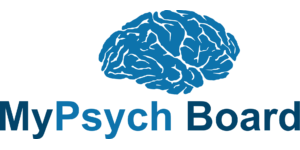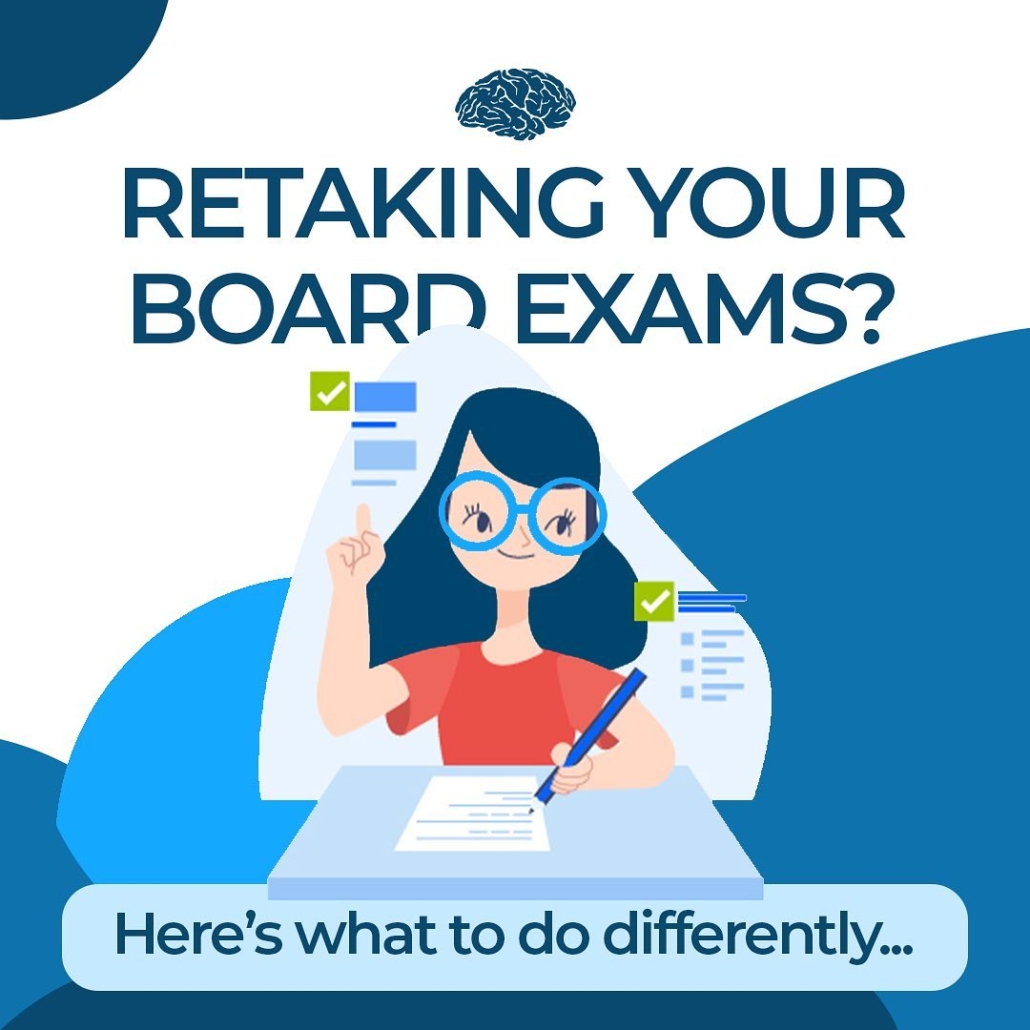The time has finally come… you’re locked in, ready to go, and you’re going to ace your retake exam. Why? Because you’ve followed our TOP 5 tips that ensure your success in passing your Psychiatric Board Exam with ease!
1 – Analyze Your Weak Points
If you know where you struggled with most in the last board exam you can hone in on intaking as much information as you can retain. These don’t need to just be areas you did pool on previously, but could also be ones that could be further reinforced. Try out My Psych Board’s customizable tests that zero in on your most missed questions!
2 – Focus On The NOW
The past is the past, there’s no point in going back! The only way to move in a positive direction is forward. Learn from your mistakes and how you can apply what you’ve learned for better-guaranteed results. If you stay focused on past failure it’s only going to bring negativity and additional stress to your study sessions.
3 – Create A Plan
When studying it’s essential to make the most of your time. Create a plan tailored to your needs. Before you can even begin studying you need to make sure you have all the resources you need. Organize items into folders, check you have all the materials you need, and tidy up your study spot.
4 – Utilize Detailed Questions Banks (like ours here)
With detailed Q-Banks, you’ll get the blueprints, questions, detailed information, vignettes, and more! Within the question breaks, you can get real-time feedback on correct answers, and learn where you’ll need to continue to improve.
BONUS TIP: Did you know we offer FREE Trials of all of our Question Banks? Click here to try today (with no credit card required…)
5 – Take Regular Breaks
As with anything don’t overdo it, You need to ensure you aren’t pushing yourself too far! When you’re studying and preparing for the exam you’re taking a mental health break. This will help break up your studying time, keep you from feeling overwhelmed, and ensure you’re retaining all the information you’re taking in.
Still, feeling uneasy? Contact us and we can help YOU pass your boards with ease!




Navigate Life Transitions Like A Pro
/in General, StudyingHow To Build Good Habits
/in General, Health and WellnessDeveloping good habits and implementing them into your daily routine is crucial for achieving success in all areas of your life. Habits are the small, repeated actions that we take each day that ultimately shape who we are and what we accomplish.
Good habits are essential because they help us make progress towards our goals, improve our health and well-being, and increase our overall productivity. By developing good habits, we can create a framework for success that allows us to achieve our desired outcomes consistently.
Forming habits
How to go about forming habits is the most difficult part. In order to start making positive changes and pushing yourself to create these small, repeated action, you must first identify what areas of your life you want improvement in. This requires some honest self-reflection. After you’ve identified your areas to work on, it helps to create a step-by-step plan for executing the changes.
For example, if you want to improve your health and fitness, establishing a habit of regular exercise and healthy eating is crucial. If you want to advance in your career, developing a habit of continuous learning and taking action towards your goals is necessary. If you want to improve your relationships, cultivating habits of active listening, showing appreciation, and communicating effectively can make all the difference.
Consequences of good habits
Implementing good habits into your daily routine requires commitment, consistency, and a bit of effort. However, the benefits of developing good habits are well worth the investment. By creating a routine that includes good habits, you can increase your productivity, reduce stress, and improve your overall quality of life. Moreover, the benefits of good habits extend beyond just achieving your desired outcomes. Developing good habits can also help you develop self-discipline, build self-confidence, and increase your sense of control over your life. By establishing good habits, you can create a solid foundation for long-term success and happiness.
In conclusion, developing good habits and implementing them into your daily routine is essential for achieving success in all areas of your life. Good habits are the building blocks of success, and they can help you create the life you desire. By committing to developing good habits, you can create a framework for success that will support you throughout your journey.
Ready to learn more?
Give our question banks a try- FREE- using our Free Trial! Or if you’re ready to take the plunge, check out our Question Banks and find the perfect fit for you! Or, contact us with any questions you have so we can get you on the right path today!
Syndrome Series: Obsessive Compulsive Disorder
/in General, StudyingWhat is Obsessive Compulsive Disorder
Obsessive Compulsive Disorder (OCD) is a condition characterized by the presence of obsessions and/or compulsions. Obsessions are recurrent thoughts, urges, or images that are intrusive and unwanted, while compulsions are repetitive behaviors or mental acts that are applied to the obsessions (or other rules) that are rigidly followed.
Types of Obsessions and Compulsions
The types of obsessions and compulsions vary broadly, although there are common themes. Stereotypical OCD symptoms showcased in media are fear of contamination accompanied by compulsive cleaning (seen famously on the TV show Monk). Other common themes include symmetry (organizing, ordering, or counting compulsions), morality (sexual, aggressive, or religious based compulsions), or harm (checking compulsions for fear of harming others). These themes are seen globally across cultures with minor variances.
The performance of the compulsion is done in an attempt to mitigate anxiety or distress associated with the obsession. Individuals with OCD typically have an impending sense of doom if they don’t perform the compulsions, or they may believe something horrific will occur if they do not perform the tasks. The individual with this condition finds distress in their compulsions and obsessions and avoiding the compulsion or obsession can take up a significant amount of time. Because of this, they may avoid of people or certain places in order to avoid a trigger for a compulsion.
Realistically, the action and obsessions are not connected in any significant way. However, the extent that the individual believes this depends on their insight.
Insight
Insight refers to how well the individual recognizes the credibility of their beliefs. They may have good or fair insight in which they realize their disordered beliefs are definitely or most likely untrue; poor insight in which they think their obsessive compulsive beliefs are probably true; or absent insight in which they are completely convinced their disordered beliefs are true.
Prevalence and Transmission
The average age of onset is 19.5 years old, with a quarter of cases starting by the age of 14. Females tend to be affected slightly more than males in adulthood, while males are more affected in childhood. The prevalence in the U.S. is 1.2%, with similar prevalence rates seen globally. There is a 2x rate of familial transmission among first degree relatives with the condition compared to those without first degree relatives with the condition.
First Line Treatments
Treatment options for OCD generally includes psychotherapy and pharmaceuticals. These can be used exclusively or in combination with each other.
Psychotherapy
Cognitive Behavioral Therapy (CBT) is one of the first line treatment options for OCD. CBT is effective in treating OCD by helping the individual become aware of the cognitive distortions present that are leading to their compulsive behavior. Once identified, the clinician can work with the patient to untangle how the obsession and compulsion are not directly related and ultimately remove the desire to complete the compulsion when faced with a trigger.
In addition to standard CBT, there is another type of CBT called Exposure and Response Prevention (ERP) that can be highly effective in the treatment of OCD. With this type of therapy, the client is systematically exposed to gradually increasing levels of the trigger for their compulsions and assisted in learning how to reject the compulsion.
Pharmaceuticals
Mayo clinic reports the following antidepressants approved by the U.S. Food and Drug Administration (FDA) to treat OCD:
Additional Treatment Options
Other treatment options may be considered if first line treatments fail. These include Deep Brain Stimulation and Transcranial Magnetic Stimulation. These options are typically reserved for cases in which neither first line treatments have been found to be effective, and are generally used in patients over the age of 18. In both these treatment options, different neurological regions of the brain are stimulated using electrodes in order to suppress compulsive thoughts and behaviors.
Ready to learn more?
Give our question banks a try- FREE- using our Free Trial! Or if you’re ready to take the plunge, check out our Question Banks and find the perfect fit for you! Or, contact us with any questions you have so we can get you on the right path today!
REFERENCES:
American Psychiatric Association. (2022). Diagnostic and statistical manual of mental disorders (5th ed., text rev.). https://doi.org/10.1176/appi.books.9780890425787
Mayo Clinic:https://www.mayoclinic.org/diseases-conditions/obsessive-compulsive-disorder/diagnosis-treatment/drc-20354438#:~:text=Antidepressants%20approved%20by%20the%20U.S.,children%208%20years%20and%20older